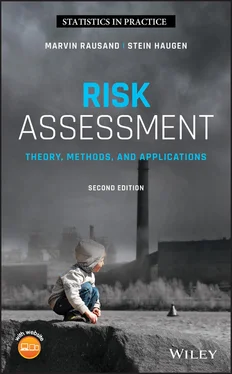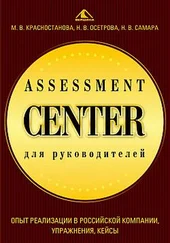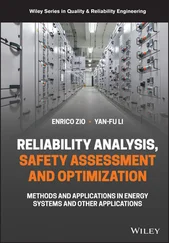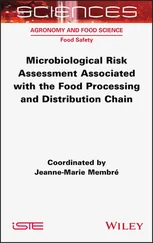1 ...8 9 10 12 13 14 ...45 The prime objective of any risk assessment is to provide decision support. Whenever making a decision that affects risk, a risk assessment helps understanding what the sources of risk are. To illustrate this issue, some typical process industry decisions that can be supported by information from risk assessment are listed.
1 Location of a process plant. Chemical process plants often handle toxic, flammable, and/or explosive materials (commonly called hazardous materials). Release of these materials may affect people living or working outside the plant. Understanding the risk these people are exposed to is important before making a decision about where to locate a plant.
2 Layout of a process plant. Release of flammable material may cause fire, and this may spread to other equipment, leading to a far more severe event than the initial fire. Understanding the sources of risk may help us locate the equipment at safe distances from each other.
3 Need for and design of safety systems. All process plants are protected by a range of safety systems, to reduce pressure in tanks and vessels in emergencies, to isolate equipment that is leaking, to detect fires and gas releases, to extinguish fires, and so on. Risk assessment can help us understand what capabilities and capacities these systems need to have to protect against accidents.
4 Performing maintenance operations. There is a need for continuous maintenance of equipment in a process plant. Some of the work may represent a risk to the maintenance personnel and to others. Risk assessment can help us plan the work so it can be performed in a safe manner and inform the personnel about the risk involved.
5 Deciding about repairs and modifications. Equipment that is important for safety may fail during the operation of a plant and we normally want to repair this as quickly as possible. Sometimes, doing the repair may represent a risk, and we need to weigh the risk associated with doing the repair against the risk associated with postponing the repair, for example, until the next major shutdown of the plant. Risk assessment can be used to compare options.
6 Reliable work operations. Sometimes, work operations may be particularly critical to perform correctly because errors in the performance may have large consequences. Risk assessment can be used to systematically evaluate such work operations, to identify if changes are required.
7 Reductions in manning. A common situation is that cost cutting leads to reduction in manning in process plants. This can have unwanted effects such as less time to perform work or postponement of work that may be critical to maintain a safe plant. Risk assessment can also be used in situations like these, to determine what the effects are on risk.
These are just some examples of decisions where risk assessment may provide input to the decision‐making process. The examples illustrate the wide range of problems that may be addressed, from wider issues such as location of a plant to technical details of how an individual system should be designed, and from purely technical issues to issues involving human and organizational factors.
The range of industries and applications where risk assessment is being used is widening constantly. Some examples are listed in Table 1.2. The table gives some examples and does not pretend to provide a complete picture.
Table 1.2Risk arenas that may be subject to risk analysis.
| Risk arena |
Application or problem area |
| Hazardous substances |
Chemical/process industry, petroleum industry (incl. pipelines), explosives industry, nuclear industry. |
| Transport |
Air traffic (airplanes, helicopters, drones), railways, marine transport, road transport. |
| Space industry |
Space equipment and projects. |
| Product safety |
Technical products, such as machinery, cars, robots, autonomous systems. |
| Critical infrastructures |
Drinking water supply, sewage systems, power grids, communication systems, hospitals and health‐care, banking and financial systems. |
| Medical sector |
Medical equipment, robotic surgery, bacteria/viruses. |
| Work, activity |
Industry, agriculture, forestry, sport. |
| Environmental protection |
Pesticides,  , temperature increases, ocean level increases. , temperature increases, ocean level increases. |
| Food safety |
Contamination, infection. |
| Health safety |
Cancer, tobacco, alcohol, radiation. |
| Project risk |
Time and cost of large projects (e.g. construction, software development). |
| Economic/financial |
Insurance, investment, financial, enterprise, and project risk. |
| Security |
Sabotage, theft, cyberattacks, espionage, terrorism. |
The underlying principles and methods described in this book can be applied to all of the risk arenas in Table 1.2, but there are differences in terminology and methods that may be confusing. This applies, for example, if we compare a risk assessment of hazardous materials with a security risk assessment. Definitions and methods are described in guiding documents, standards, and legislation for different applications. In this book, we try to describe risk assessment in a generic manner and Chapter 20provides examples from a variety of application areas. In the following section, we specify more precisely what the focus of this book is, and the type of applications we are primarily aiming at.
1.6 Objectives, Scope, and Delimitation
This book is written for students, engineers, and analysts engaged in risk assessments, both in the design phase and in the operational phase of systems.
The main objective of the book is to give a thorough introduction to risk assessment and to present the essential theory and the main methods that can be used to perform a risk assessment.
More specific objectives are
1 To present and discuss the terminology used in risk assessment. Optimistically, we hope that this may contribute to a more harmonized terminology in risk assessment.
2 To define and discuss how risk can be quantified and how these metrics may be used to evaluate the tolerability of risk.
3 To present the main methods for risk analysis and discuss the applicability, advantages, and limitations of each method.
4 To present and discuss some specific problem areas related to risk assessment (e.g. human errors, dependent failures).
5 To describe how a risk analysis may be carried out in practice and illustrate some important application areas.
The book is concerned with risk related to (i) A technical or sociotechnical system , in which (ii) events may occur in the future , that have (iii) unwanted consequences (iv) to assets that we want to protect.
The systems considered may be any type of engineered system, ranging from small machines up to complex process plants or transportation networks. 1The book does not cover all aspects of risk, but is limited to accidents where a sudden event harms one or more tangible assets . Adverse effects caused by continuous and long‐term exposure to a hazardous environment or hazardous substances (e.g. asbestos) are thus not covered unless the exposure is caused by a specific event (e.g. an explosion).
When people or the environment is exposed to hazardous chemicals, the risk is traditionally analyzed by dose–response models, also called exposure–response relationship. This topic is not covered in the book. The book is concerned with the consequences of accidents, but does not describe how we can calculate or otherwise determine the physical effects of accidents. Examples include the impact energy involved in a collision between two cars, the size and intensity of a fire, or the overpressure generated by an explosion. Instead, the methods focus on the probabilistic aspects of the analysis.
Читать дальше

 , temperature increases, ocean level increases.
, temperature increases, ocean level increases.










